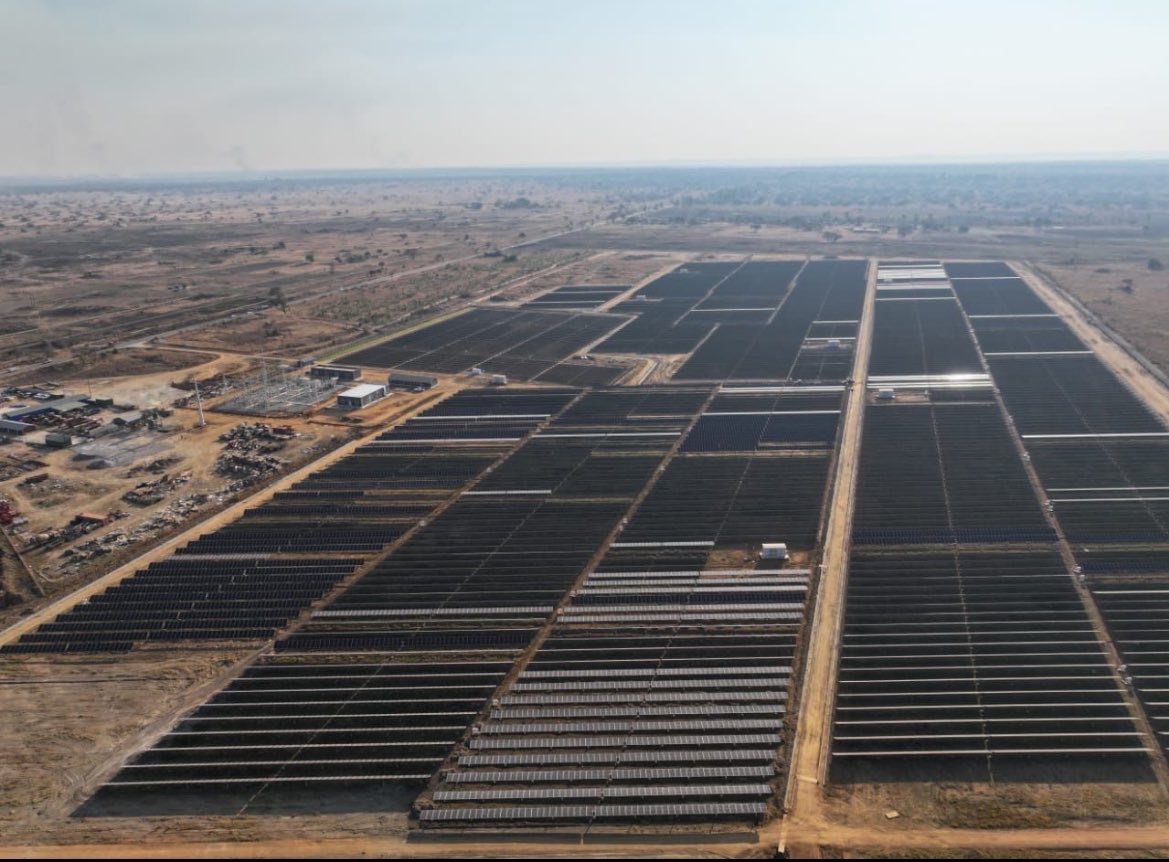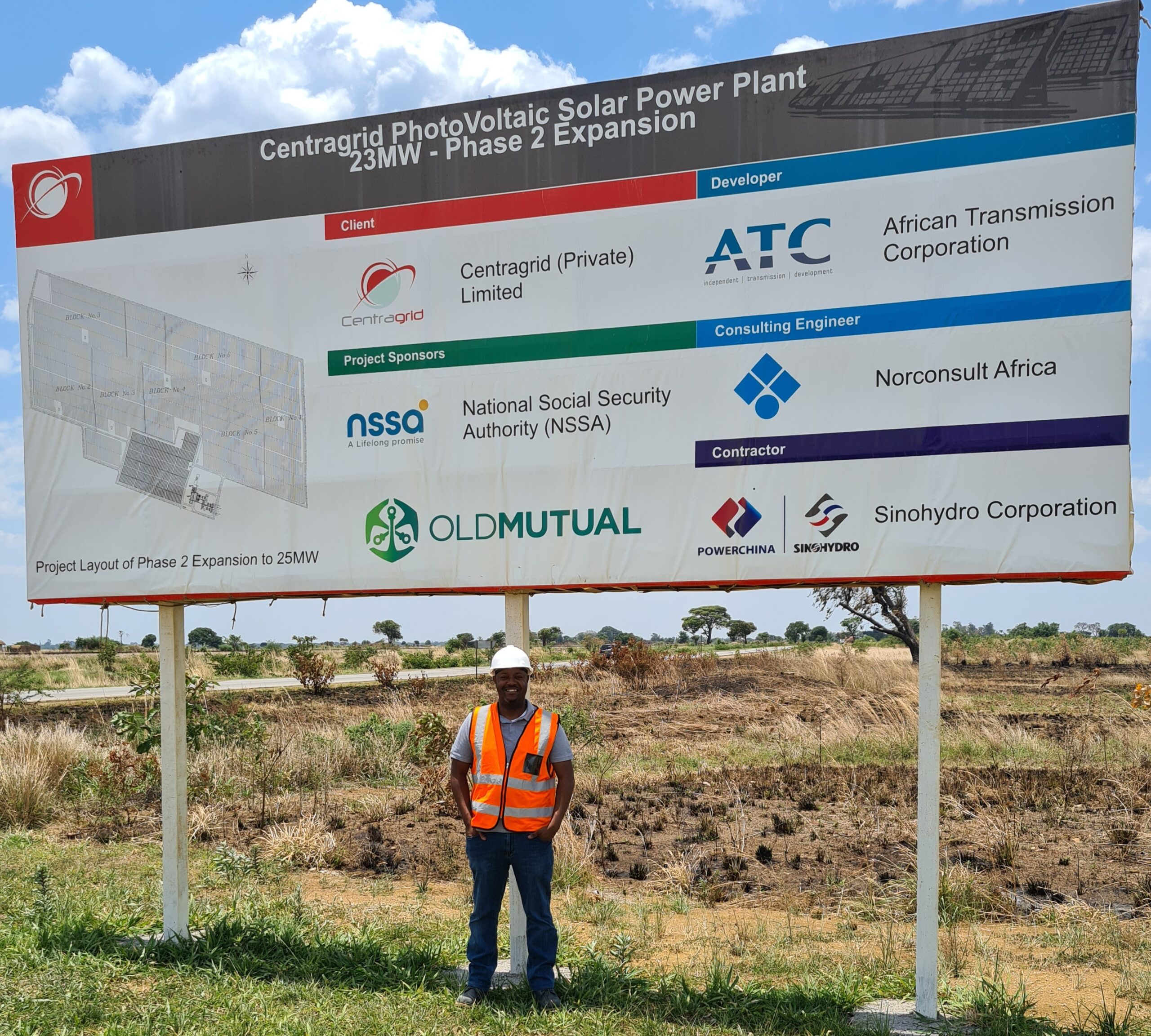Sign up for daily news updates from CleanTechnica on email. Or follow us on Google News!
In August, there was a big summit for the Southern African Development Community (SADC) in Harare, Zimbabwe. It was the 44th edition of this summit, with heads of state for 13 out of the 16 member states attending. In preparation for this big summit, the Zimbabwe government spent close to $200 million to fix up a number of old roads in the country’s capital city. The road rehabilitation was done using local funding, and all of this work was completed in about 6 months.
Let us zone in on the $200 million of local resources spent to fix up roads in about 6 months, and combine it with a another locally-funded model, this time, a 25MWp solar PV plant built just outside Harare that is now feeding into the grid. Centragrid, an independent power producer licensed to own, finance, construct, and operate a 25MW solar power plant and its associated transmission facilities in Nyabira, Zimbabwe, has recently completed the 25MWp plant. The power plant is located at the 35km mark along the Harare-Chirundu highway and it is now feeding into the grid. Local pension funds such as NSSA, as well as investment arms of Old Mutual, helped make this project a reality. It is now the second largest utility-scale plant in Zimbabwe.
With Zimbabwe experiencing one of its worst ever electricity rationing programs, infamously known as load-shedding, accelerating the deployment of these types of plants could make a significant contribution to the country’s energy mix in a short space of time. Most people in the country that are connected to the grid do not have electricity from about 5am to 11pm every day due to the severe electricity generation shortfall. Severe droughts over the past couple of years, along with some aging coal power plants, have severely hampered the national utility company’s electricity generation efforts.
In terms of hydropower, Zimbabwe and Zambia share the Kariba Dam. The Kariba Dam was constructed between 1955 and 1959 and extends for about 280 km. It holds about 185km3 of water. On the Zimbabwe side (Kariba South), the hydropower plant now has an installed generation capacity of 1,050 MW. On the Zambian side (Kariba North), there is now an installed generation capacity of 1,080 MW, so therefore the dam has a combined capacity of 2,130 MW. The dam is also a major tourist attraction for the country, second only to Victoria Falls. Lake Kariba is also now home to the world’s most productive reservoir fishery, and therefore a source of employment for the artisanal fishing industry.
The big problem is that there is a serious drought currently affecting a number of countries in southern Africa. Some reports say this is the worst drought in over 100 years. The problem is that these droughts are becoming too frequent and increasing in severity. The Kariba Dam’s water levels are extremely low at the moment as a result. The Zimbabwe Power Company (ZPC), is now restricted to generating about 200MW from the 1,050MW of installed capacity.
Back to how a locally-funded model could help alleviate the electricity generation shortfall in a short space of time. Here, I propose a hybrid model between the model used to rehabilitate roads some roads in Harare over the last 6 months and the model using pension fund/local investment firms and their collaboration on the 25MW solar PV Centragrid plant just outside Harare.
Solar plants of this size can be built fairly quickly and can be up and running in under a year. The biggest challenge experienced by independent power producers in Zimbabwe is lack of funding. With foreign funding having proven to be difficult to secure for most developers for over a decade due to several factors, including the country’s “risk profile,” a locally-funded model based on the learnings from Centragrid’s first 25MW plant as well as the government putting its own resources into the mix as it did with the accelerated road rehabilitation project, could change the game for local IPPs.
Let’s focus on the $200 million used for roads in those 6 months. At current pricing, going solar is attractive right now due to the incredible drop in the cost of solar panels. A 25MWp solar PV plant can now probably be constructed for about $20 million in this part of the world at current prices. This cost includes all the development, permitting, and construction costs up to the Commercial Operation Date (COD). $20 million? That means for the $200 million used to rehabilitate a few roads in the capital city, we can get 10 of these 25MWp solar PV plants completed in less than a year. That means we can add 250MWp of solar PV to Zimbabwe’s energy mix in a truly brief time.
Zimbabwe has 10 provinces. They could even build one plant in each province for easier integration into the grid and also spread the solar love around the country equitably. Adding four of these 25MW plants to each province would get 1GWp of good installed nameplate solar capacity in a very short time. This could be spread out over a period of four years by adding one 25MWp per province each year. $200 million each year to fund this could be mobilized by combining the government’s own resources (as shown via the road rehabilitation project) plus the local pension and investments funds (as shown by Centragrid’s project).
Finding shovel-ready projects for all of this will not be a problem, as there are already several planned solar PV and hydro projects adding up to several gigawatts that have been waiting for funding in Zimbabwe. Of course, these solar PV projects would be part of a diverse energy mix to help shore up the country’s generation capacity. Other players, in particular large mining and smelting firms, are looking into natural gas power plants and some are even looking to coal.
The mining industry in Zimbabwe says it will lose up to $500 million by 2025 due to the prevailing electricity challenges. As some of the big mines and smelting houses look to coal and gas power plants, adding 40 of these 25MWp solar PV plants distributed around the country could really make a substantial contribution to the country’s overall energy mix in about 4 years if a serious plan is put in place, riding on the learnings mentioned above. These would also help increase the penetration of clean renewables in a country dominated by coal-powered plants. Zimbabwe needs cheaper, faster-to-build electricity generation plants. These 40 x 25MW solar PV plants could help us get there. All that is needed is the will to follow through. The template is already there, so it’s time to copy and paste all the learnings and move with speed. I hope the responsible authorities will consider this approach.
Images courtesy of Remeredzai and Centragrid

Chip in a few dollars a month to help support independent cleantech coverage that helps to accelerate the cleantech revolution!
Have a tip for CleanTechnica? Want to advertise? Want to suggest a guest for our CleanTech Talk podcast? Contact us here.
CleanTechnica uses affiliate links. See our policy here.
CleanTechnica’s Comment Policy






